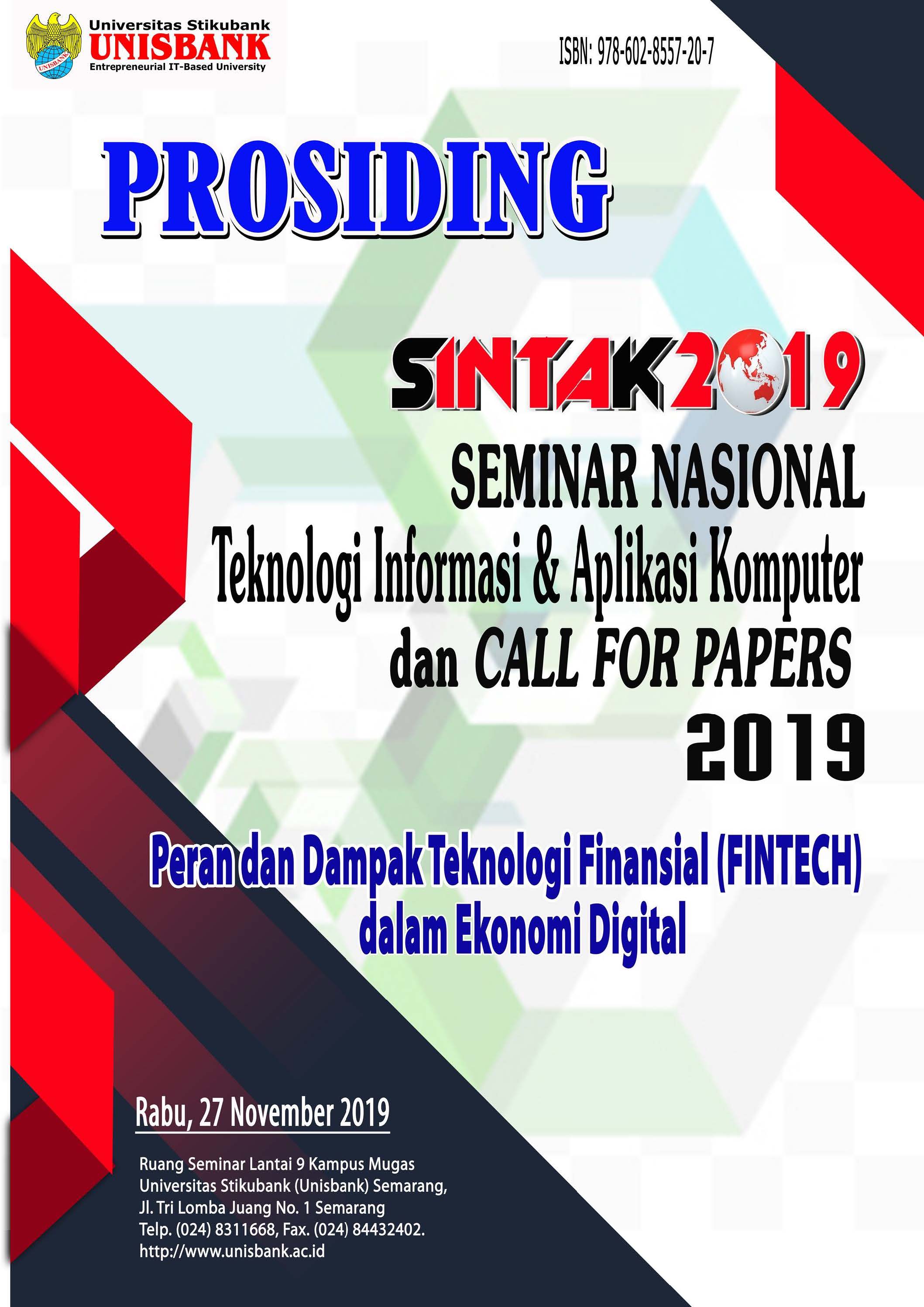KEMUDAHAN DAN KEGUNAAN SERTA PENGARUHNYA TERHADAP NIAT MENGGUNAKAN E-LEARNING
Abstract
Perkembangan teknologi dan regulasi yang ada memungkinkan bagi perguruan tinggi dalam sebagian perkuliahan dilakukan melalui e-learning (blended learning). Beperapa hasil penelitian mendapatkan bahwa keuntungan e-learning adalah kemampuan yang berfokus pada kebutuhan yang bersifat individu. Tujuan penelitian ini adalah meneliti tentang pengaruh kemudahan dan kegunaan terhadap niat menggunakan elearning bagi mahasiswa. Objek pada penelitian ini adalah mahasiswa Fakultas Teknologi Informasi yang diambil sampel sebanyak 126. Penelitian ini termasuk penelitian kwantitatif. Analisis yang digunakan adalah analisis regresi berbanda. Penelitian ini memberikan bahwa niat mahasiswa menggunakan e-learning masih kurang. Hasil penelitian yang lain adalah : (1). Kemudahan memiliki pengaruh yang positif terhadap kegunaan e-learning, (2) Kemudahan tidak mempengaruhi niat menggunakan e-learning, dan (3) Kegunaan berpengaruh positif terhadap niat menggunakan e-learning.
References
[2] Marc, J. R., 2002, Book review: e-learning strategies for delivering knowledge in the digital age. Internet and Higher Education, 5, 185-188.
[3] Wagner, N., Hassanein, K. & Head, M., 2008, Who is responsible for E-learning in Higher Education? A Stakeholders’ Analysis. Educational Technology & Society, 11 (3), 26-36.
[4] Algahtani, A.F., 2011, Evaluating the Effectiveness of the E-learning Experience in SomeUniversities in Saudi Arabia from Male Students' Perceptions, Durham theses, Durham University.
[5] Venkatesh, V., 2000, Determinants of perceived ease of use: Integrating control, intrinsic motivation, and emotion into the technology acceptance model, Information systems research, 11, 342–365.
[6] Oblinger, D. G., & Hawkins, B. L., 2005, The myth about E-learning. Educause review.
[7] European Commission, 2001, The eLearning Action Plan: Designing tomorrow’s education.
http://www.elearningeuropa.info.
[8] Abbad, M. M., Morris, D., & de Nahlik, C., 2009, Looking under the Bonnet: Factors Affecting Student Adoption of E-Learning Systems in Jordan. The International Review of Research in Open and Distance Learning.
[9] Keller, C. & Cernerud, L., 2002, Students’ perception of e-learning in university education.Learning, Media and Technology, 27(1), 55-67.
[10] Maltz, L., Deblois, P. & The EDUCAUSE Current Issues Committee., 2005, Top Ten IT Issues.EDUCAUSE Review, 40 (1), 15-28.
[11] Adams, D.A., Nelson, R.R., & Todd, P.A., 1992, Perceived usefulness, ease of use, and usage of information technology: A replication. MIS Quarterly, 16(2), 227.
[12] Jarvenpaa, S.L., Tractinsky, N., & Vitale, M., 2000, Consumer trust in an internet store. Information Technology and Management, 1(1-2), 45-71.
[13] Gefen, D., & Straub, D.W., 2004, Consumer trust in B2C e-Commerce and the importance of social presence: Experiments in e-Products and e-Services. Omega, 32(6), 407-424.
[14] Venkatesh, V., & Davis, F.D., 2000, Studies Linked references are available on JSTOR for this article : A theoretical extension of the technology acceptance model. Four Longitudinal Field Studies, 46(2), 186-204.
[15] Davis, F.D., Bagozzi, R.P., & Warshaw, P.R., 1989, User acceptance of computer technology: A comparison of two theoretical models. Management Science, 35(8), 982-1003.
[16] Davis, F.D., 1989, Perceived usefulness, perceived ease of use, and user acceptance of information technology. MIS Quarterly, 13(3), 319.
[17] Lam, T., Cho, V., & Qu, H., 2007, A study of hotel employee behavioral intentions towards adoption of information technology. International Journal of Hospitality Management, 26(1), 49-65.
[18] Huh, H.J., Kim, T., & Law, R., 2009, A comparison of competing theoretical models for understanding acceptance behavior of information systems in upscale hotels. International Journal of Hospitality Management, 28(1), 121-134.
[19] Fishbein, Martin and Icek Ajzen, 1975, Belief, Attitude, Intention and Behavior: An Introduction to Theory and Research. Reading, MA: Addison-Wesley.
[20] Simon, S.J., 2007, User Acceptance of Voice Recognition Technology: An Empirical Extension of the Technology Acceptance Model. Journal of Organizational and End User Computing, 19(1), 24-50, January-March 2007
[21] Elwood, S., 2006, Investigating students’ perceptions on laptop initiative in higher education An extension of the technology acceptance model. Campus-Wide Information Systems Vol. 23 No. 5, 2006 pp. 336-349
[22] Jack R. Fraenkel, Norman E. Wallen, 1993, How to design and evaluate research education. New York : McGraw-Hill

